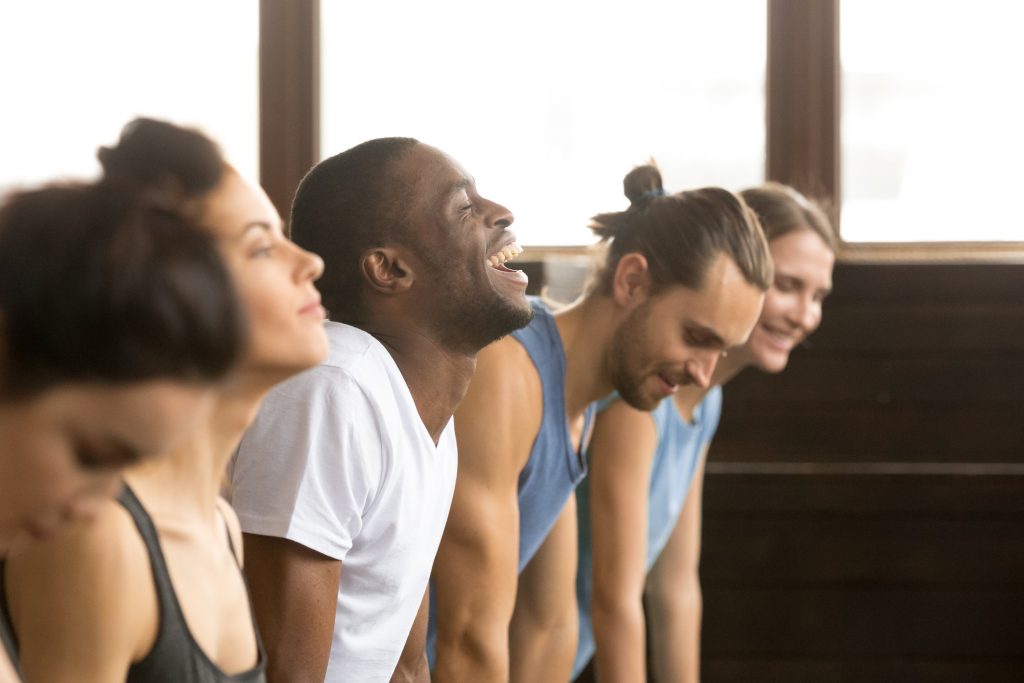
Introducing Laughter Yoga
A fun and entertaining therapy to reduce stress, promote a positive attitude, improve relationships and strengthen teams.
Although it may not seem like it at first, yoga and comedy can go hand in hand. So-called Laughter Yoga can serve as an emotional therapy to help improve your ability to manage your feelings in your work environment, among other things. Besides, it is possibly the most ‘fun’ type of Yoga there is.
Laughter Yoga is based on the premise that everyone can laugh without the need for jokes, humour or comedy. You don’t even need a sense of humour to practise it. You only need to let yourself go.
Is there a scientific basis?
Yes, this practice combines Yoga breathing exercises with laughter exercises, and is based on the scientific basis that your body does not recognise the difference between natural and provoked laughter. Therefore, by simulating laughter, endorphin secretion by the brain is used to obtain the physiological, biochemical and psychological benefits produced by the simple act of laughing, be it real or fake.
Main benefits
Some benefits of this type of Yoga are:
- It raises self-esteem and optimism. It produces endorphins that create a positive mental state, acting as a natural antidepressant and eliminating anxieties.
- It acts as a powerful cardiovascular and aerobic exercise. Your pulse after laughing for one minute is equivalent to doing 10 minutes of exercises on machines (W. Frey, 1964).
- It improves circulation. It increases circulation to the lymphatic and digestive systems, helping the body eliminate waste products in the blood.
- It helps to better manage emotions. It soothes emotions such as fear, loneliness, sadness, anger or boredom.
Laughter Yoga has been used since 1995 as a therapy to improve communication skills with people in your environment and help them to strengthen, among other things, work teams, breaking down barriers. As its creator, Dr. Madan Kataria, said, ‘you can never laugh too much’.
Sources:
-
- The New York Times
- Yogadelarisa.com
This post is also available in: Portuguese (Portugal)
